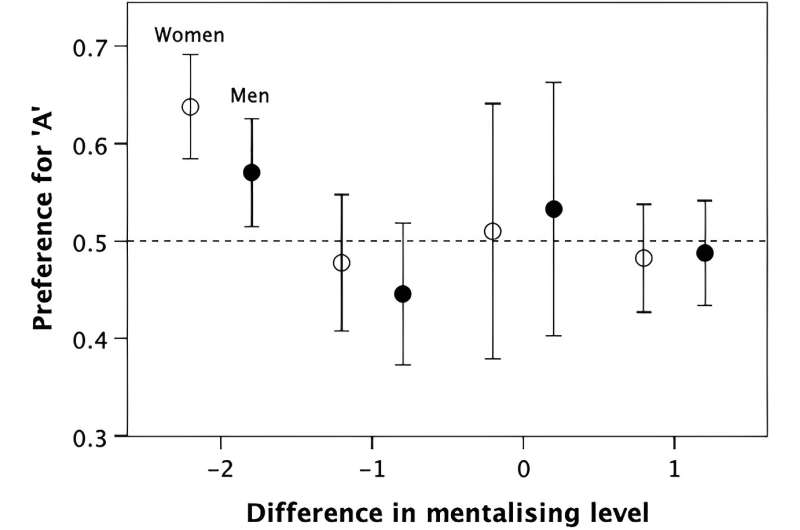This article has been reviewed according to Science X's editorial process and policies. Editors have highlighted the following attributes while ensuring the content's credibility:
fact-checked
proofread
Joking apart: What men and women find funny

Men rate visual jokes more highly than women do, whereas women prefer jokes that involve political commentary or the dynamics of close relationships, a new study of print cartoons dating from 1930-2010 finds.
The research, led by Professor Robin Dunbar of the University of Oxford and published in the journal HUMOR, also found some similarities, with both sexes enjoying cartoons that delve into the complexities of romance.
Study data was collected from 3,380 people attending an exhibit of print cartoons by well-known artists at The Cartoon Museum, London. The humor of such cartoons is strongly visual and often uses a verbal caption to add context and, in many instances, the punchline.
The researchers arranged cartoons of varying complexity in 18 pairs and asked study participants to rate which joke was funnier. The responses were then analyzed according to the 'mentalizing' content of the cartoons, participants' age and sex, and when the cartoon was first published.
More complex jokes with more 'mindstates' ("I know what she's thinking about what he's saying") were considered funnier than those that relied on simpler, more slapstick humor. However, such jokes only worked up to a limit of three levels with additional mindstates falling flat: the 2D medium cannot ably handle more detailed reveals like moving 3D images with an additional time perspective.
"Like verbal jokes, cartoons are funnier the more mindstates, essentially characters, they involve," says Professor Dunbar. "But there is a limit after which they become incomprehensible."
Participant age didn't significantly affect the humor rating given to a cartoon, and nor did the time since its publication.
Both sexes clearly considered visual jokes using puns or wordplay and social commentary jokes about domestic marital relationships funnier than any other topic. Men and women were least enthusiastic about political jokes.
However, some modest differences were found between the sexes, with women indicating a greater preference for jokes about domestic situations and political commentary, while men preferred situational (slapstick) and visual jokes.
This finding may reflect how men and women manage their relationships, the authors surmise. "We argue that these differences in humor preference arise from the remarkable differences in social style of the two sexes," Professor Dunbar says. "This explanation has previously been overlooked because psychologists and others have concentrated on IQ-type differences, which are minimal."
More information: Robin I. M. Dunbar et al, Why cartoons make (some of) us smile, HUMOR (2024). DOI: 10.1515/humor-2023-0111
Provided by De Gruyter




















